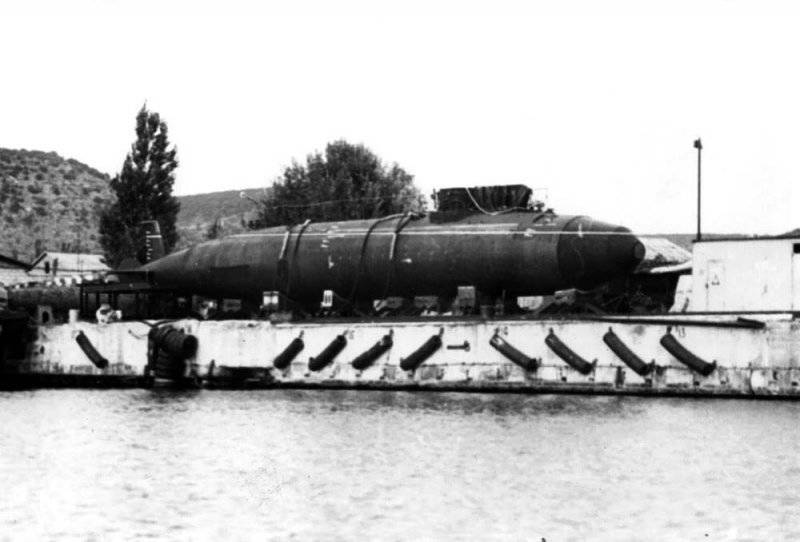Projects of submarines 957 and 957Т "Cedar"
The 957 project was supposed to have similar performance characteristics with the previous torpedo submarines of the Lazurit Design Bureau of the 945, 945А and 945AB projects, but with a sharp tightening of the requirements for reducing their own noise. The standard steam generating plant for the 4 generation was to be a monoblock KTM-6, whose ground test stand under the designation TM-4 was then tested at the NITI in Sosnovy Bor. The first nuclear-powered submarine of the 945AB Mars project, which was transitional from the third to the fourth generation, was the first to receive this PU, but at the time of the collapse of the USSR this reactor was not ready and both boats were disposed of in the stocks in a high degree of availability of hull structures. The boat had a single hull architecture with a relatively large ratio of length to width. The long and relatively narrow cylindrical robust body, somewhat resembling the body of a submarine of the Los Angeles type, but with a less pointed shape of the nasal limb, resulted from the need to maintain the depth of immersion typical of the Soviet submarines of the previous generation. Agree with the single-architecture of the Navy forced increased demands on the low-noise new generation of submarines. For the first time, the nasal horizontal rudders on the Soviet torpedo submarines were moved from the nose of the hull to the fence of the sliding devices. Were used already become standard zonal mounting blocks of equipment with tight depreciation and other measures to reduce their own noise. For the rational use of space inside the boat, natural wooden models of the turbine and other compartments were built in the Central Design Bureau "Lazurit". In addition, to optimize the hull lines, a series of large-scale self-propelled and towed dummies were built.
It is worth noting that even in the process of substantiating the characteristics of the submarines of the 4 generation, the Central Research Institute for them. A.N.Krylova were carried out to optimize the contour of the boat. As part of this work, the Krasnoye Sormovo plant, for example, built a large-size towed model, which did not correspond, however, to any of the projects developed at that time and which was often confused with the 885 model being towed. However, in its form, it somewhat resembles Kedr, which suggests that some elements of this R & D could be implemented in the 957 project. Part of the proof of this is the fact that the Central Design Bureau "Lazurit" was first implemented the recommendations of the Central Research Institute. A.N.Krylova, which described the positive impact on the hydrodynamics of the boat due to the forward beveled front edge of the retractable devices, as can be seen on the model. This solution later found its application on the SSBN of the 935 and 955 projects, as well as on the SSGN of the 881 project.
The sonar complex should have included the Irtysh-Amphora State Joint-Stock Company, as well as on all other boats of the 4 generation.
“Kedr” was supposed to be a relatively simple and mass shock boat to replace the submarines of 671, 945 and 971 projects. The cessation of work on it was connected not only and not so much with the financial difficulties experienced by the USSR at the end of 80 or the lack of production capacity in the next decade, but also with the massive resistance of the military-industrial complex itself, as the high demands at the production level, apparatuses and units were impossible to fulfill without cardinal technical re-equipment of enterprises. In addition, there is an opinion that the very concept of the 957, which largely repeats the concept of American submarines of the Los Angeles type, no longer met the requirements of the 90s.


Information